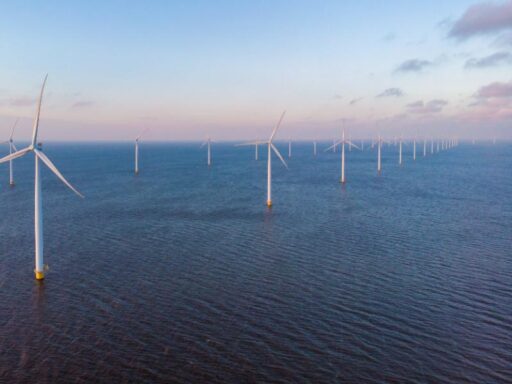
GCube, an underwriter for renewable energy projects, will be incorporating catastrophe risk models for offshore wind assets from Renew Risk, a Software-as-a-Service (SaaS) risk analytics provider, to optimize insurance pricing.
GCube will use Renew Risk’s catastrophe risk models to help them in understanding the risks and liabilities of offshore wind assets such as extreme weather events, inter-connected component damage probabilities, operational failures and expected losses.
The models are based on advanced physics, data analytics and simulation techniques and will be able to help GCube quantify these risks to allow for tailored and competitive pricing.
Renew Risk’s models will also be integrated with Nasdaq Risk Modelling for Catastrophes, a SaaS platform that provides access to a broad range of catastrophe risk models and services to (re)insurance firms, brokers and financial institutions.
Incorporating Renew Risk onto Nasdaq’s platform will enhance users’ ability to assess risk associated with offshore wind farms, estimate losses, compare project risk-return profiles, and efficiently allocate capital.
Renew Risk’s models account for different factors that affect risk and liability such as the location, age, size, power, and gearbox system of the turbines, the cost and availability of replacement parts and vessels, the downtime and reliability of the operations, and the Business Interruption (BI) losses. This will allow GCube to offer optimal insurance pricing to its customers, the company said.
These models also offer comprehensive coverage of high-risk regions, encompassing Northeast US hurricanes, Taiwan earthquakes and typhoons, as well as Japan earthquakes and typhoons.
Fraser McLachlan, CEO of GCube Insurance, said: “We are delighted to partner with Renew Risk. This partnership will enable us to enhance our offshore wind services by using Renew Risk’s pioneering catastrophe models. Renew Risk’s models will help us better understand and quantify the complex catastrophe risks of offshore wind assets, which will allow us to offer more tailored and competitive pricing.”
James Lay, senior director at Nasdaq, commented: “The extraordinary growth of the offshore wind industry demands an increasingly sophisticated insurance ecosystem to serve it. This is driving a critical need for advanced models capable of accurately assessing risk. As the first models of their kind available in the Oasis format, integrating Renew Risk with Nasdaq’s platform will provide seamless access to the tools necessary to support the continued growth of the sector.”
Ashima Gupta, co-founder & CEO at Renew Risk, added: “We are excited to partner with GCube Insurance & Nasdaq. These collaborations will enable us to showcase our innovative catastrophe models platformed on Nasdaq, rooted in cutting-edge advanced physics, data analytics and simulation techniques. Our models will assist GCube in enhancing its ability to evaluate and handle intricate catastrophe risks associated with offshore wind assets, ultimately translating into amplified advantages for GCube’s esteemed clients.”
The U.S. offshore wind industry is facing cost challenges across the board, as utilities and developers alike pay the price to pull out of agreements.
Ørsted recently scrapped 2 offshore wind power projects in New Jersey, citing supply chain issues. Now, the company is trying to get out of a $300 million guarantee it agreed to pay New Jersey in the event it failed to build its first wind farm off the state’s coast.
Rhode Island Energy recently pulled out of its PPA with Ørsted and Eversource for the Revolution Wind 2 offshore project — citing higher interest rates, increased expenses and questionable federal tax credits — and concluding that the project had become uneconomical.
In July, Avangrid agreed to pay $48 million to pull out of a PPA with Eversource Energy, National Grid and Unitil for another offshore wind project, the 1,223 MW Commonwealth Wind located 20 miles south of Martha’s Vineyard. Rhode Island Energy, meanwhile, terminated its PPA with Ørsted and Eversource for the offshore wind farm Revolution Wind 2.
In total, the cancellations equate to nearly one-fifth of President Joe Biden’s goal of 30 gigawatts of offshore wind power by 2030.
However, the U.S. offshore wind industry is making some headway despite the setbacks.
As Vineyard Wind and South Fork Wind sit on the precipice of delivering their first power to the grid, the pipeline of projects approved for construction has tripled in size, with more projects just weeks away from achieving final approval themselves. These findings are detailed in the Business Network for Offshore Wind’s U.S. Offshore Wind Quarterly Market Report, which documents key investments announced over the past three months, growth in state demand for offshore wind and notable policy advancements that drove the U.S. market forward between July and September 2023.